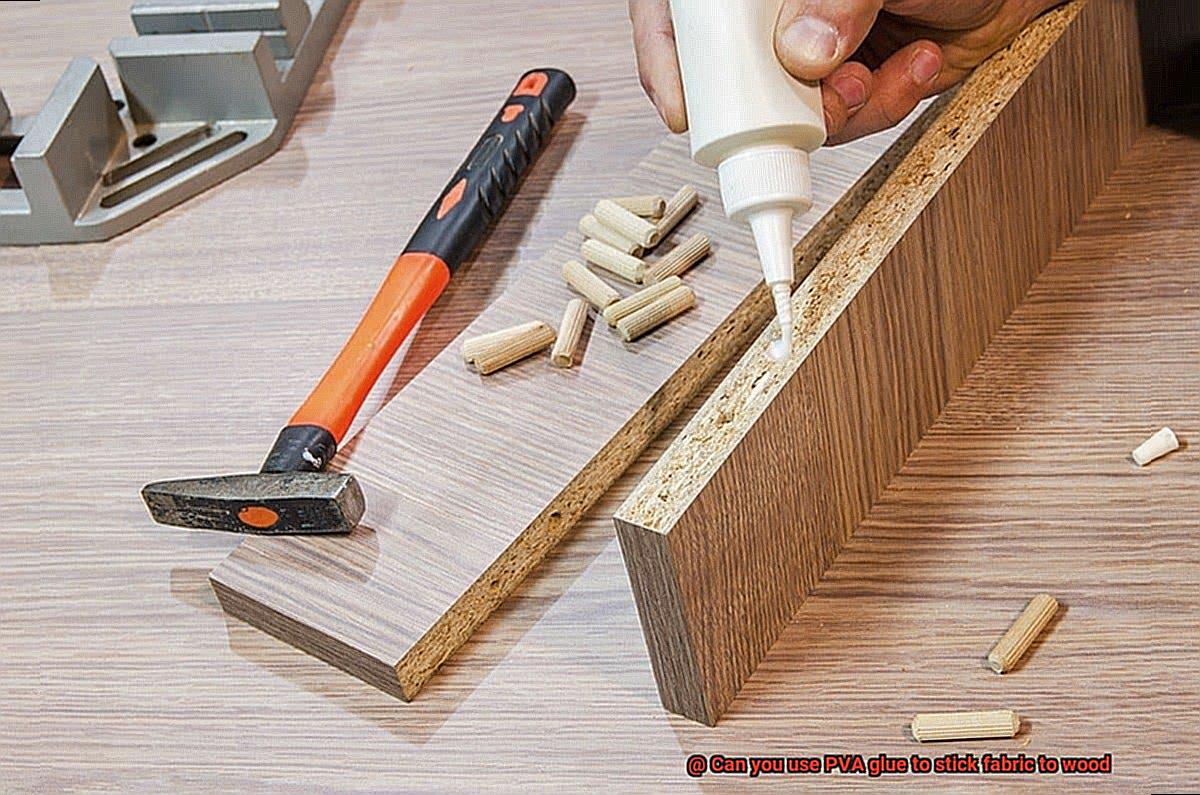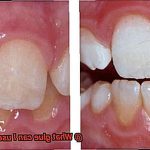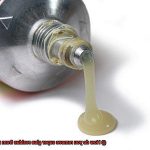Calling all DIY enthusiasts and crafty creatives. If you’re knee-deep in a project that involves sticking fabric to wood, you might be wondering if PVA glue is up for the task. This beloved adhesive has been a go-to for decades in the art, craft, and woodworking industries due to its strength, versatility, and affordability. But can it hold its own when it comes to bonding two such different materials?
In this blog post, we’ll delve deep into everything you need to know about using PVA glue to stick fabric to wood. We’ll explore how this adhesive works and reveal the proper techniques and tricks for seamless application. You’ll also discover which types of wood and fabrics are best suited for use together, along with any potential benefits or drawbacks of using PVA glue.
We’ll also discuss why so many DIY lovers and crafters turn to PVA glue time and time again. From its rapid drying time to easy availability and compatibility with other materials, there’s no wonder it’s such a popular choice. Whether you’re creating a personalized photo frame, upholstering a chair or crafting an eye-catching wood-and-fabric masterpiece, this post will provide all the insights you need for a flawless finish. So keep reading.
What is PVA Glue?
Contents
PVA glue, also known as polyvinyl acetate, is a remarkable adhesive that has become a staple among crafters and woodworkers alike. This water-based glue is made from polyvinyl acetate emulsion, a polymer with exceptional bonding properties. PVA glue’s versatility, ease of use, and strong bonding strength make it an ideal choice for a wide range of applications.
One of the most notable benefits of PVA glue is its ability to dry clear, making it perfect for projects where aesthetics are of utmost importance. Additionally, PVA glue is non-toxic and can be easily cleaned up with just soap and water. There are several types of PVA glue available in the market, each with unique properties that make them suitable for different applications.
Standard PVA glue is perfect for general-purpose applications such as paper crafts, bookbinding, and woodworking. It has a slower drying time compared to other types of PVA glue, allowing for more time to work on projects. Waterproof PVA glue, on the other hand, is designed to resist water and can be used for outdoor projects or those that will be exposed to moisture.
Meanwhile, carpenter’s glue contains added resins and fillers that make it stronger and more durable than standard PVA glue, making it perfect for woodworking projects.
Can You Use PVA Glue to Stick Fabric to Wood?
The answer is yes, as PVA glue is a versatile adhesive that works well for various projects, including fabric crafts and woodworking. However, there are a few things to keep in mind to ensure a strong and effective bond.
Firstly, the type of wood being used and the fabric being glued will affect the success of the bond. For instance, if you’re working with a porous or rough wood surface, it may be challenging for the PVA glue to create a strong bond with the fabric. In such cases, it’s advisable to sand down the wood surface or use a primer before applying the glue. Moreover, if you’re working with delicate or lightweight fabric, it might be preferable to use a spray adhesive instead of PVA glue to avoid damaging the material.
When using PVA glue to stick fabric to wood, it’s essential to apply an even layer of glue to both surfaces and then press them firmly together. To ensure the strongest bond possible, clamp the two surfaces together for several hours. If you don’t have clamps at hand, you can use heavy objects like books or weights to apply pressure on the surfaces.

It’s worth noting that PVA glue dries clear and is non-toxic, making it safe for crafting projects. However, if you get any glue on your skin, simply wash it off with soap and water.
Preparing the Fabric and Wood for Glue Application
If you’re planning to use PVA glue to bond fabric to wood, it’s important to prepare both surfaces before applying any adhesive. Don’t worry though, we’ve got you covered.
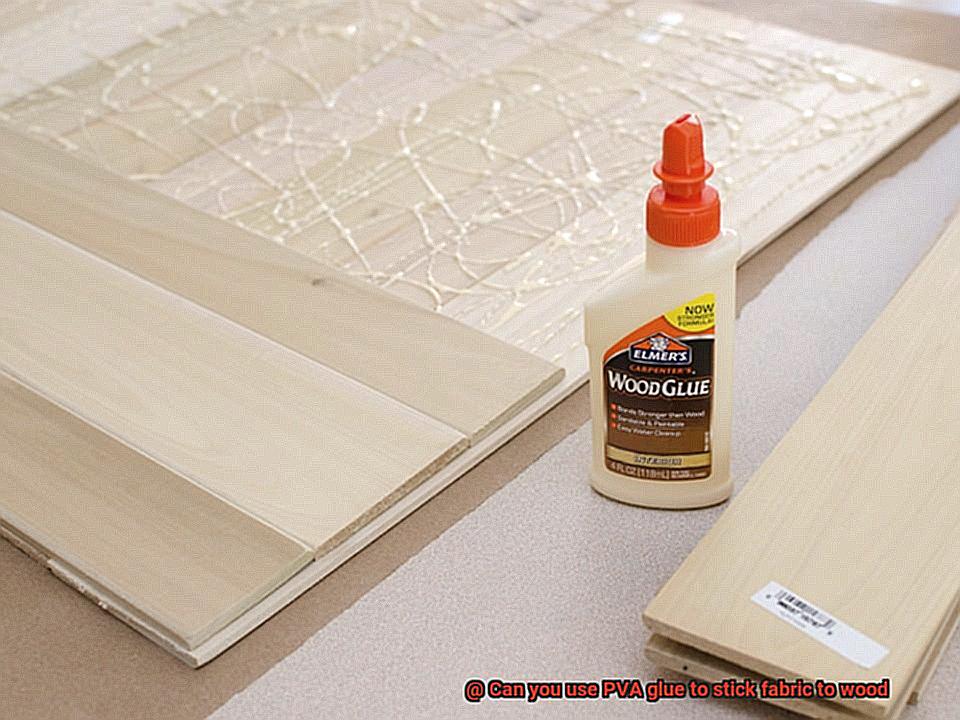
First things first, ensure that both the fabric and wood surfaces are clean and free from dirt, dust, or debris. To avoid any hindrances to the bonding process, it’s recommended to pre-wash your fabric before gluing. Also, iron your fabric to remove any wrinkles or creases that may cause an uneven bond.
For the wood surface, sanding is crucial. Sanding creates a rough texture that allows the PVA glue to penetrate deep into the wood fibers. It also removes any varnish or finish that may hinder bonding.
Once both surfaces are clean and prepared, it’s time to apply the glue. Apply a thin layer of PVA glue evenly on both surfaces and wait until the glue becomes tacky before placing the fabric onto the wood. This ensures a strong and secure bond.
Applying the Glue
You’ve taken the first step by deciding to use PVA glue, but there are some key factors to keep in mind when applying it to ensure a bond as strong as your creativity.
Firstly, cleanliness is key. Make sure both surfaces are completely free of debris and dust. Use a clean cloth or gentle cleaning solution to wipe them down before application. Once they’re clean, apply the glue evenly using a brush or roller, ensuring good coverage without any drips or runs.
Now comes the crucial moment – pressing the fabric firmly onto the wood surface. This step requires finesse and care to avoid air bubbles or wrinkles. Take your time and make sure everything is aligned perfectly. Depending on the size of your project, you may need clamps or weights to hold the surfaces together while the glue dries.
Remember that not all fabrics and woods are created equal. Some may require stronger adhesives like epoxy or contact cement, so it’s always wise to test a small area first before committing to a larger project with PVA glue.
Drying and Curing Time
Though PVA glue boasts a quick-drying time of 20 to 30 minutes, it doesn’t mean that it has fully cured yet.
Curing time is the duration required for the glue to reach its full strength and create a permanent bond between the materials. Factors such as the humidity and temperature of your environment can affect curing time, which can take up to 24 hours or more.
It’s crucial to give PVA glue enough time to cure before handling or putting any pressure on the bond. Rushing the process may cause the bond to weaken or even break apart, wasting your hard work and effort.
Thankfully, you can speed up the curing process by applying heat using a hairdryer or heat gun. This evaporates excess moisture in the glue and encourages faster curing. However, be careful not to overheat the glue as it can become brittle and compromise the bond.
Benefits of Using PVA Glue to Stick Fabric to Wood
When it comes to attaching fabric to wood, there’s no better choice than PVA glue. As an expert in the field, I can attest to the many benefits of using this versatile adhesive.
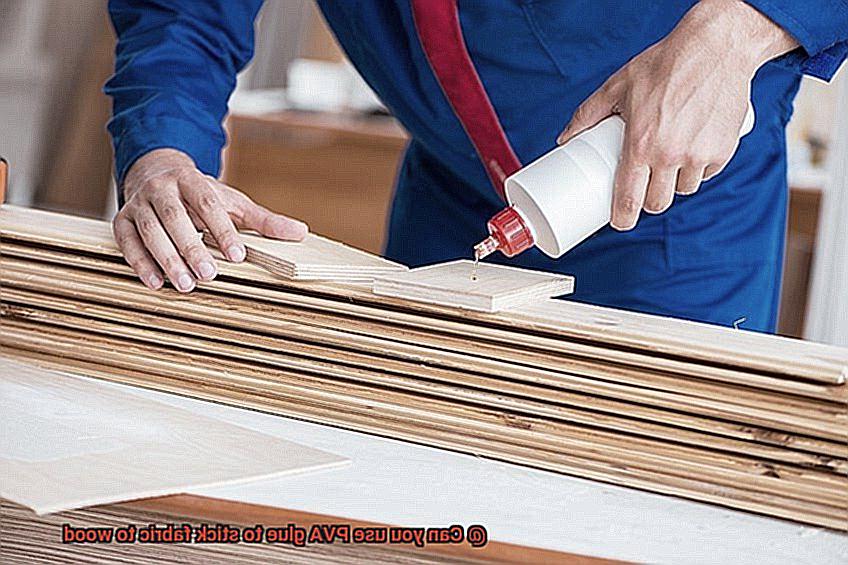
Firstly, PVA glue is incredibly affordable and readily available at any hardware or craft store. It’s a budget-friendly option that won’t break the bank, making it perfect for DIY enthusiasts.
Secondly, PVA glue is easy to apply and dries clear, leaving no unsightly marks or stains on your fabric or wood. And best of all, it dries quickly, so you can move on to the next step of your project without delay.
But what about its holding power? Rest assured, PVA glue creates a strong bond between the fabric and wood that can withstand wear and tear. This makes it an ideal choice for projects that require a sturdy and long-lasting hold.
Lastly, let’s talk about cleanup. PVA glue is water-soluble, which means you can easily clean up any excess glue with just water. This feature makes it perfect for projects where precision is essential, as you can wipe away any excess glue without damaging your project.
x0XTqLN4hKQ” >
Conclusion
To sum it up, PVA glue is the go-to adhesive for those looking to stick fabric to wood. Its popularity among DIY enthusiasts and crafters stems from its strength, versatility, and affordability. However, there are a few crucial points to keep in mind when using this glue for this purpose.
Firstly, don’t skimp on surface preparation. Sanding the wood surface and pre-washing and ironing the fabric can help ensure a solid bond. Secondly, apply an even layer of glue on both surfaces before pressing them together firmly. Clamping or using heavy objects like books or weights can further reinforce the bond.
One of PVA glue’s best features is its clear drying formula that is non-toxic and easy to clean with soap and water. It also comes in different types suitable for various applications.
In conclusion, PVA glue offers numerous benefits for sticking fabric to wood. It’s affordable, user-friendly, dries quickly, creates a robust bond that can withstand wear and tear, and cleans up easily.

